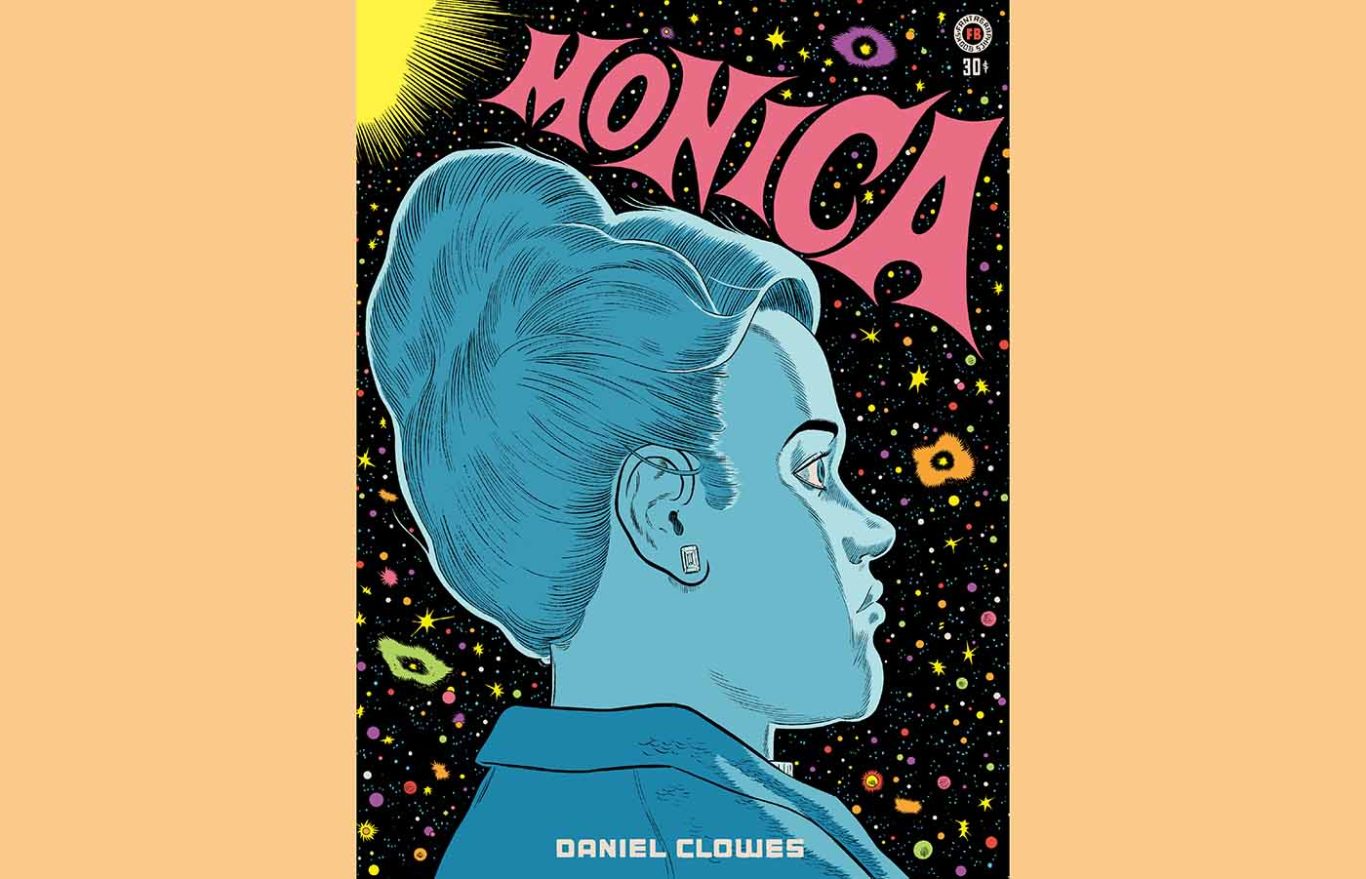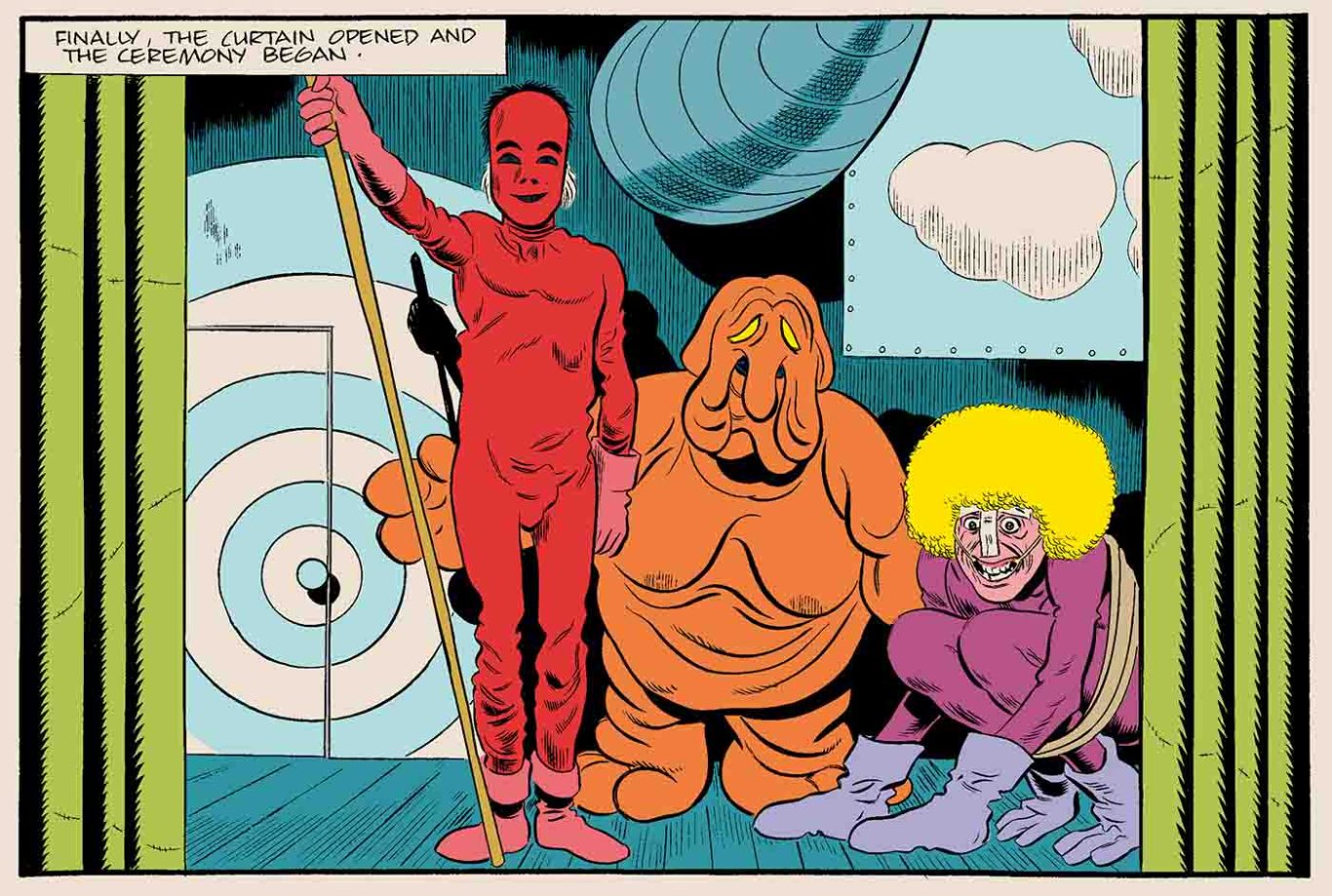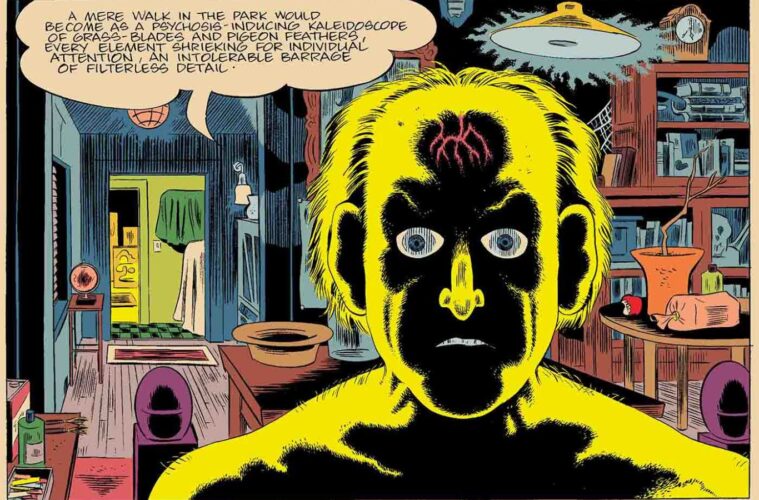Daniel Clowes sets the stage for his latest graphic novel, Monica, by jumping right into the deep end of history’s primordial slop — protozoa, dinosaurs, pharaohs, Christ, plague, Columbus, Hitler, the bomb, a dying JFK, and the Beverly Hillbillies all make colorful cameos on the opening pages.
Then you start meeting the characters, including a soldier in Vietnam and his girl back home, Penny, who steps out with a snarky hipster painter fond of jerking the chains encumbering the bourgeoisie: “Don’t you love rich people? They’re so happy and they smell great! … We have to warn them about the revolution! ATTENTION BARONS OF INDUSTRY: DOOM IS NIGH! BOARD YOUR WINDOWS!”
The flighty (not to say bipolar? schiz?) Penny moves from apartment to apartment and man to man and a couple of years later begets the book’s namesake, who spends much of her life seeking out the identity of her father. Finding success by following in her mother’s hippie-entrepreneurial footsteps when she opens a shop selling handmade candles, Monica is the perpetual square peg in a round-holed universe.

(Fantagraphics)
The graphic novelist traverses time, space, and psyches with outrageous aplomb.
Like the shifting shapes and shadows in a lava lamp, the various characters might find themselves abducting a wayward teen, conversing with a ghostly grandparent through the radio, in a coma, in “an oppositional state of introversion,” or marching resolutely into the bowels of an abusive cult (is there any other kind?).
Eventually deserted by her mother as well, Monica is void of love — “I’m officially all alone in this world: no kids, cousins, aunts; not even a pet (allergies). And no, I never got married or anything like that. There were a few boyfriends (and one girlfriend), but nothing ever lasted more than a few months.”
Yet she perseveres: “I’m a tough old bird. You’ll be lucky to look half this good when you’re my age.” Indeed, in the panels, Monica ranges from fleshy nubile college student to fit pony-tailed retiree. Her and the other characters’ transfiguring journeys through truly bizarre experiences — as personal assistant to a narcissistic straight-to-video starlet or as initiate in a murderous woodland ritual, to note just a couple — are imparted through succinctly observed hair-style changes, increasing wrinkles, and period wardrobes.
While Penny’s mood swings are as exhibitionistic as a trapeze performance, Monica holds emotions closer to the vest. In one scene, a lone whale — afflicted by barnacles that recall the red chancres on the story’s earlier plague victims — surfaces on an empty sea, accompanied by Monica’s interior monologue: “Things got pretty terrible after that — daily panic attacks, unpredictable sobbing jags, total isolation.”

(Fantagraphics)
As always, Clowes’s drawings deftly mix evocative scene-setting with telling details.
Three-quarters of the way through the story we again meet the derisive painter and candidate for Monica’s paternity, now adorned with thinning white hair and a ratty bathrobe. In his cluttered studio, paintbrushes jut from a Savarin coffee can sitting on a table laden with half-eaten meals and squashed paint tubes, an art historical prop recalling another insular and reclusive (though gaudily successful) artist, Jasper Johns.
Clowes’s hand-wrought typography also does narrative duty, visually conveying situations and emotion, as in the buoyant, textured bubble letters he crafts for “THE OPENING” to delineate a spiritual movement that allows followers to “pass through the cone,” where they’re able to “fully experience the vast universal workings beyond our deluded perceptions.” By the time we reach the bottom of the page, the program has become more rigid and controlling, with sharply angled and beveled capital letters incarnating “THE WAY,” the cult Monica lands in while searching for her father.
With its outlandish narrative excursions, Clowes’s method might at first seem a reflection of our Internet age’s gibbering chaos. But as subplots and characters segue in and out, classic throughlines become more apparent and the twisty tale emerges as intriguingly real and tough, and as entwined as a strand of human DNA. ❖
Monica is published by Fantagraphics.
❖Editor’s note: The disclaimer below refers to advertising posts and does not apply to this or any other editorial stories.
Advertising disclosure: We may receive compensation for some of the links in our stories. Thank you for supporting LA Weekly and our advertisers.

